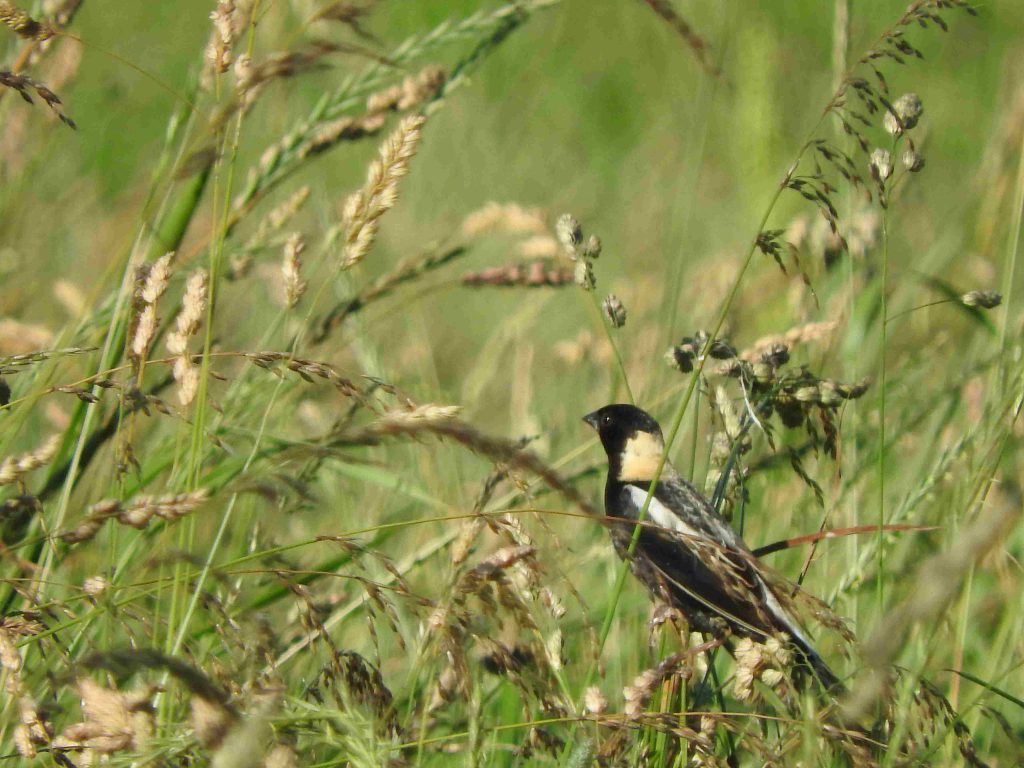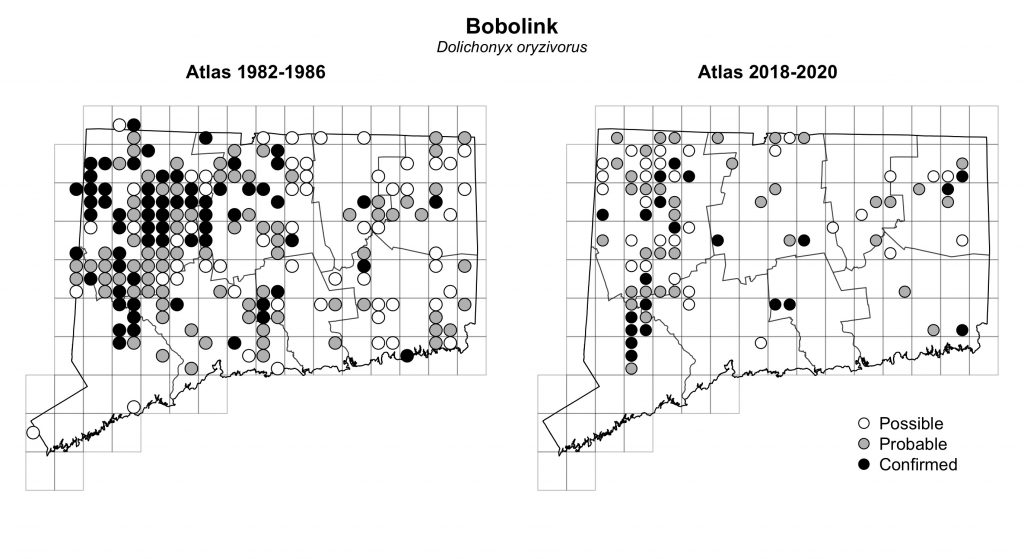A couple of days ago, Chris Loscalzo posted a tip to the CTbirds email list based on his and Marianne Vahey’s observation of nesting bobolinks in Norfolk. Chris pointed out that if you see a bird flying away from a potential nest site with a gleaming white object in its beak, then it is likely to be a fecal sac – and that this confirms breeding (code FS).

Adult birds of many species will carry their nestlings’ droppings away from the nest, so as not to have them accumulate in, or right by, the nest. Doing this both helps maintain sanitary conditions at the nest, and reduces the risk of obvious “whitewash” revealing a nest’s location to a predator. Not all birds do this, as anyone who has ever seen a barn swallow nest will know, but it is a good way to confirm many species as there are few bright white objects that birds will fly around with.
Typically, the bird will drop the fecal sac a short distance from the nest, so seeing this behaviour usually means the nest is nearby. And, if you continue to watch for a little while, you are likely to see the bird come back in the opposite direction with food for the chicks.
Coincidentally, I was out looking for bobolinks the past couple of days too. Although I failed to confirm them at Horsebarn Hill on the UConn campus yesterday, I did find a field in Stafford Springs this morning, where adults were repeatedly carrying food back and forth to the same spot, indicating the presence of a nest.
As a grassland species known to have undergone widespread declines, all observations of bobolinks are especially valuable to document.

Breeding atlas reports of bobolinks in Connecticut during the 1980s (left) and preliminary data from 2018-2020 (right).